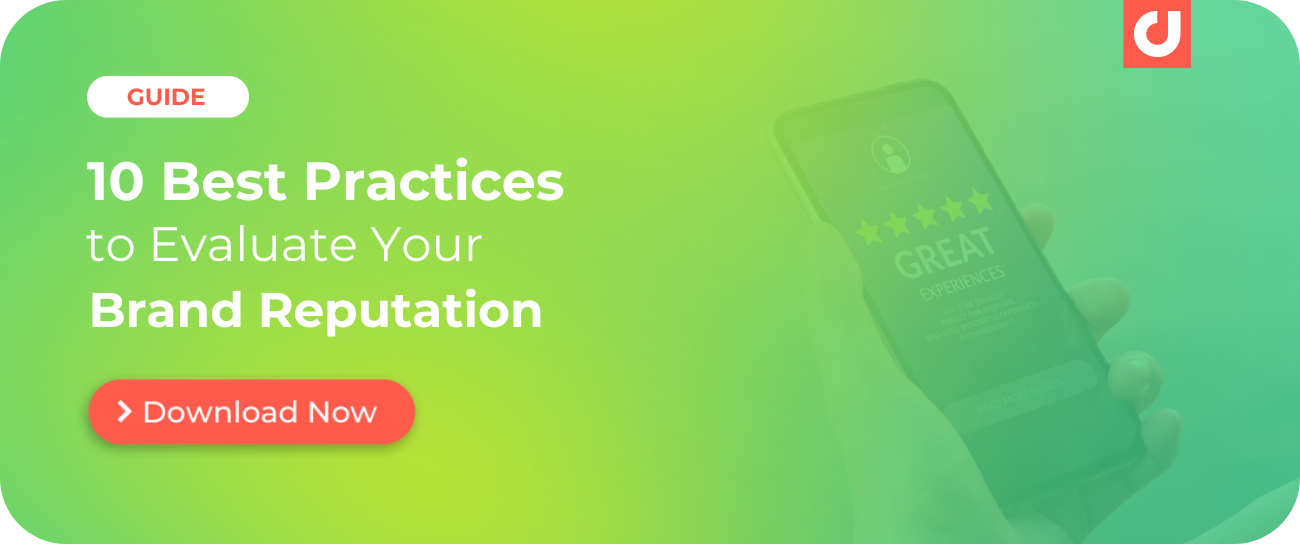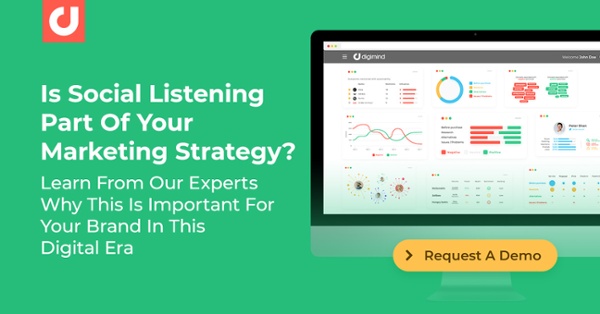E-reputation Monitoring: 3 Steps to Audit and Map Your Reputation
The Challenges of E-Reputation Monitoring for Your Brand
Reputation is the perception that Internet users have of your company, your brand, or the people who collaborate with it (executives, employees). Digital reputation or e-reputation is potentially visible on many web and social media platforms. Reputation is therefore a story of traces and imprints, on the web and in real life. E-reputation is closely linked to the overall reputation of a brand, its drivers, stakeholders and vice versa. Reputation management must therefore integrate digital axes, and vice versa: we can only work on digital reputation by following the strategies and facts of the real world.
Perception: E-reputation does not necessarily correspond to reality. Company A can market very good products but benefit from a lower e-reputation than its competitor B, who will sell lower quality products. The latter can indeed rely on very active fan communities and enjoy a better friendly reputation. Company A on the other hand may suffer from a chronic bad reputation or is linked to recent negative word of mouth. A study by the software publisher SAP established in 2010 found that more than 80% of the damage caused by reputational risk comes from a misalignment - an imbalance - between facts and reality. However, with the volume of publication and the speed at which information about a company's products is shared, a higher reputation than reality occurs in increasingly shorter durations.
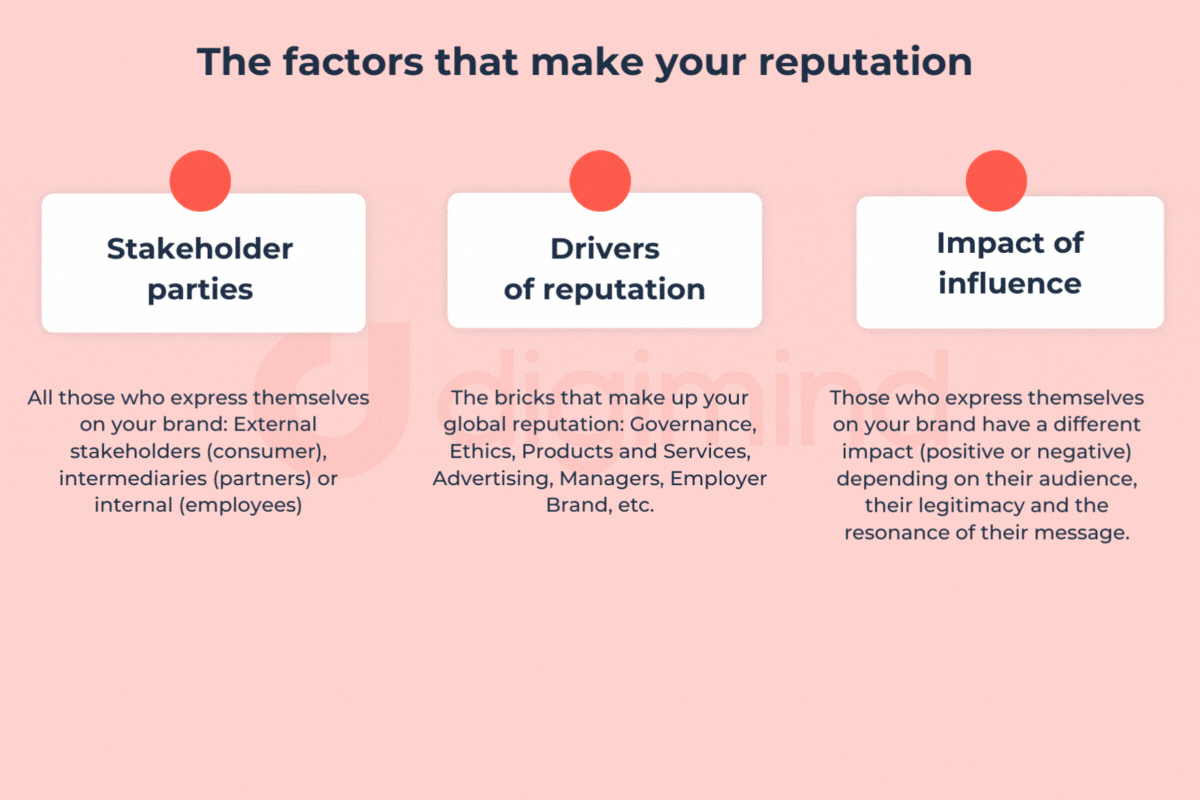
Potentially: It’s not because an Internet user has spoken about your brand that you will automatically benefit from/suffer from it. It depends on the transmission channel (forums, press comments, blogs, tweets, posts, videos, feeds), its virality, the average exposure time, the likelihood of recovery by other Internet users, simple socionauts, or opinion leaders, and the notoriety of the source whether you will be or will not be impacted by the conversation:
Link visibility in a tweet (remanence) lasts for two hours maximum if it's not shared. A video is more viral than a text-only blog post. An influencer may generate more fallout than an anonymous blogger, provided that the target audiences who buy or can buy your products read or are exposed to this content. Keeping these criteria (and many others) in mind will ensure that you do not react against the current.
E-reputation is therefore made up of the (subjective) image that a consumer, an Internet user, receives from all exposure to a brand and the content that’s accessible to them online, or in offline life.
All the publications of journalists and Internet users when they mention a brand constitute the bricks of reputation. You build your brand reputation based on your encounters and practices: advertisements, friends, media, articles, consumption, store visits, content on the net: on Twitter, TikTok, Instagram, in forums, during a Google request, via the opinions of your friends on Facebook, comments on review sites…
10 Best Practices to Evaluate Your Brand Reputation
Listening to and managing the reputation of your brands, products and managers can be complex and time-consuming without a methodology, know-how, and little common sense. We invite you to explore the first selection of some good practices tested during the deployment of reputation and social media monitoring projects. Here are 3 steps for your e-reputation monitoring:
Audit your reputation
Map your contributors and communities
Map your ecosystem of influence
I. Audit your reputation
As with all monitoring projects, e-reputation monitoring begins with questions: do people talk about my company and its brands on the web and on social media? On which channels? What are the most common themes? Is the overall tone positive? Who are the issuers? To answer this, you can carry out a reputation audit allowing you to create a snapshot of your presence and the conversations around your brand.
This audit will serve as a reference value, a standard meter to then measure the evolution of the different components of your reputation.
The reputation audit:
- Determines the priority channels of expression of your consumers, prospects, ambassadors, and detractors
- Maps the main themes of conversations
- Analyzes the overall tone associated with your brands and ideally the more specific sentiment associated with major themes
- Measures a few key KPIs: volume of conversations, reach, feelings
- Evaluates your notoriety and perception compared to competitors or key players
- Positions your reputation level within your environment
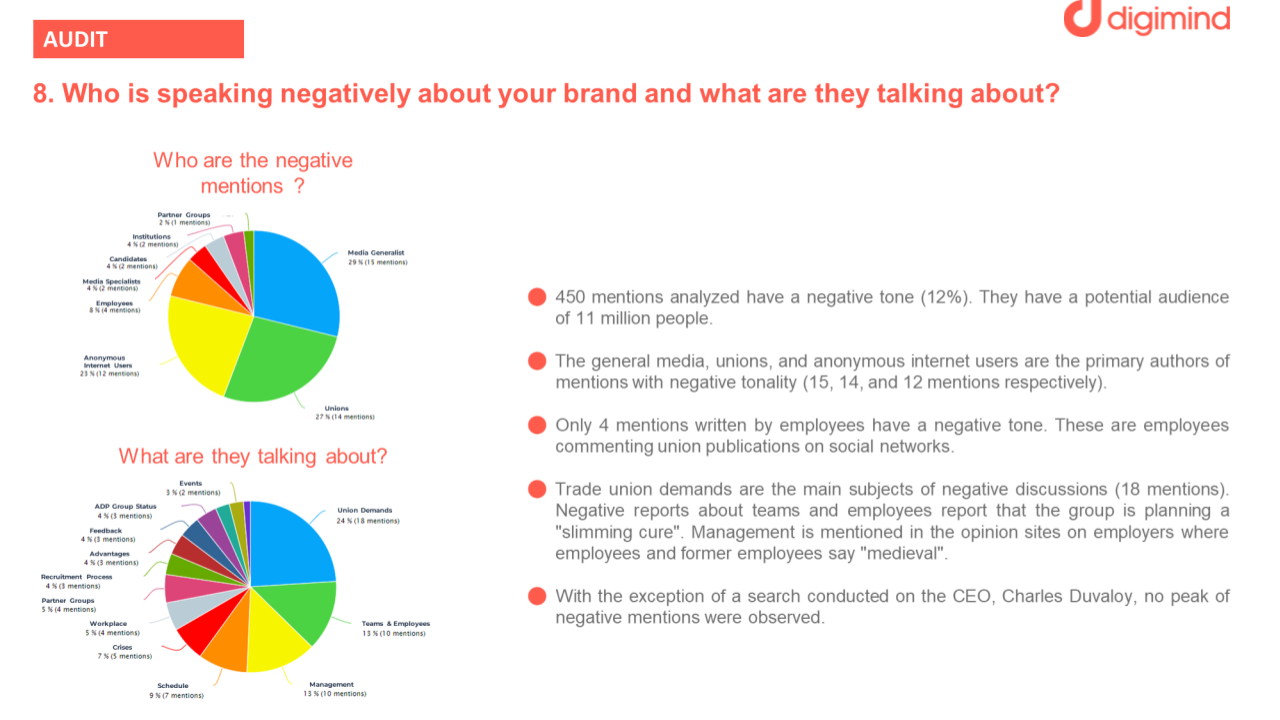
An example of a 6-month web and social media presence audit.
Mapping can be matched with dominant tones (positive-negative)
II. Map your contributors & communities
a. Map your contributors and communities
It is common, during e-reputation monitoring, to develop stakeholder maps that illustrate the extreme potential diversity of issuers and actors of your brand's reputation (external, intermediary, and external stakeholders). However, an additional dimension of analysis should be added through the types of issuers who express themselves. It is a question of setting up methods of approach to better anticipate the different types of messages, reactions, and conversations that you will have to manage. Because you will face actions and engage in conversations with often very different people: regular users, customers, occasional visitors, novices, specialists, etc.
This begins with an understanding of the profiles that make up the universe of your communities, fans and all Internet users who will interact with you.
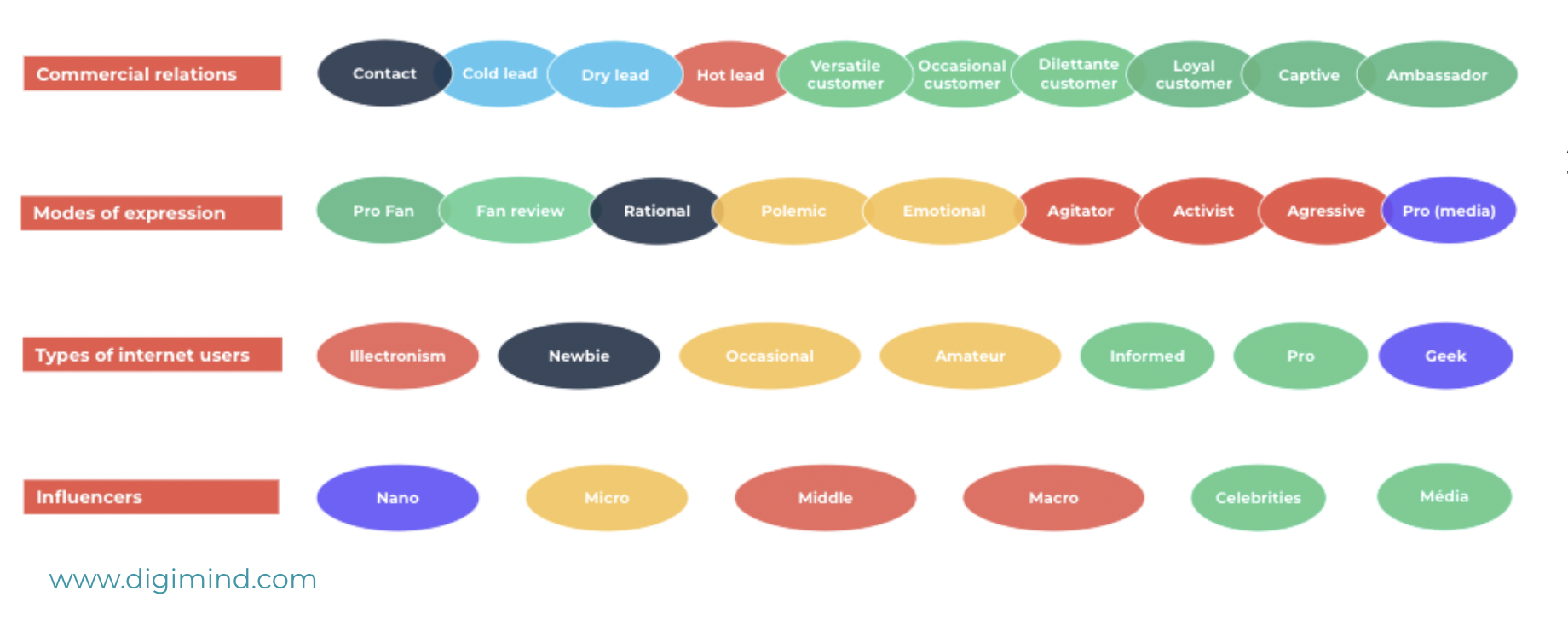
An example of a simplified typology of issuers. Rate contributors for analysis and dialogue according to the profile and position them according to their impact
In the same way that you have materialized your semantic environment through the keywords and expressions speaking about you, the stakeholders, and the influencers, you will have to map the different types of possible contributors who will feed your conversations in one way or another by commenting, questioning, participating, liking, criticizing, getting angry, and trolling.
b. Map your communities
Please note that each community is unique: the criteria on which the communities of your competitor or a company in the same sector or even of a subsidiary of your organization are based are not necessarily relevant for your contributors; if only because your product or service is not perceived in the same way by Internet users or your presence on social media is original. Apple users do not necessarily communicate and interpret messages in the same way as Windows and Android users.
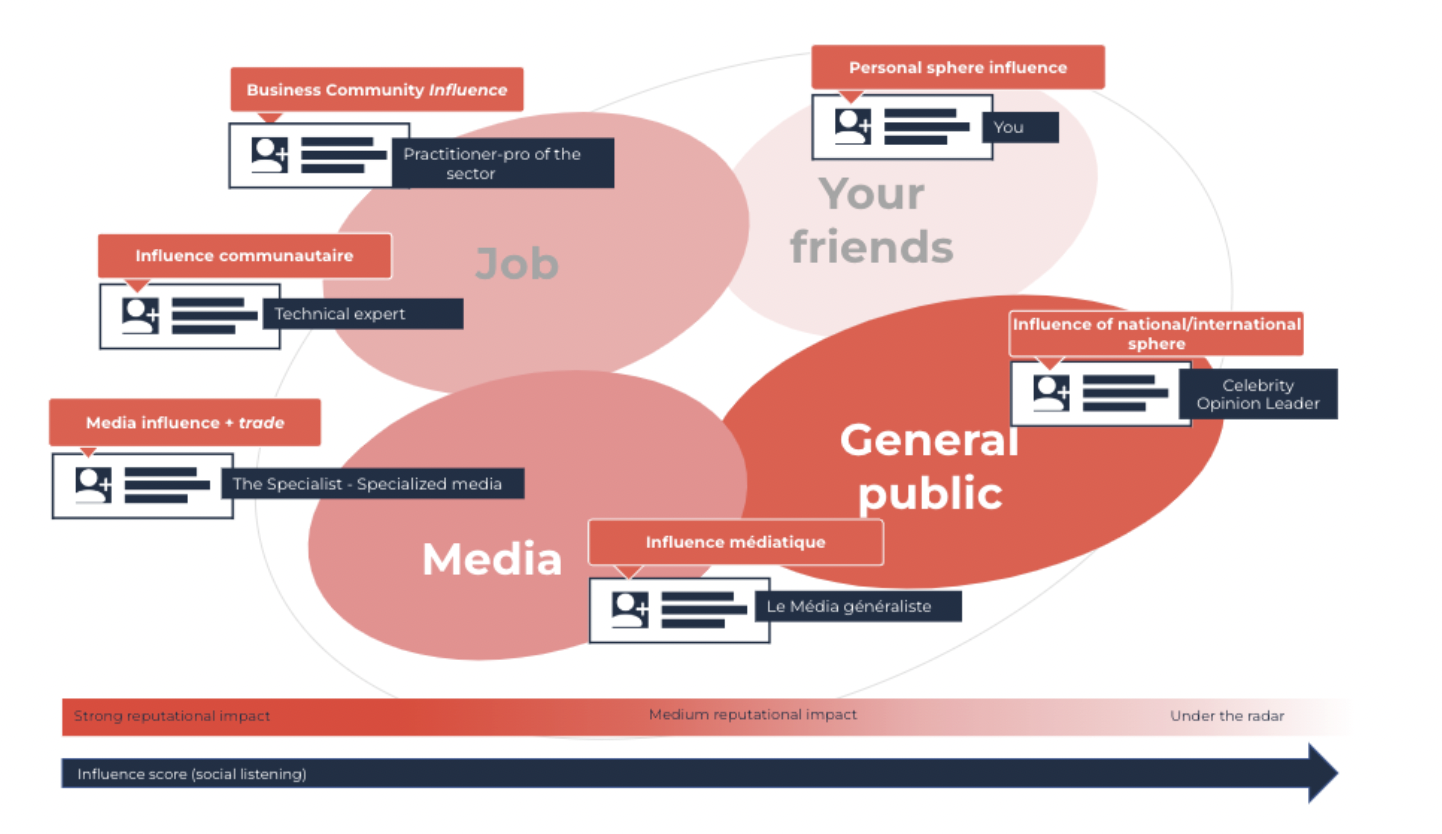
What types of communities influence the consumer, and with what weight?
Example of communities for DIY, construction, and decoration activities
These communities express themselves in spaces in which they have their own specificities. Social media and multimedia platforms have their own code: Twitch, Discord, or Reddit obey specific practices. In addition, consumers who ask for advice on Twitter will come into contact with communities that are very different from those present on a specialized forum.
Optimize Your Brand's Reputation with Social Media Listening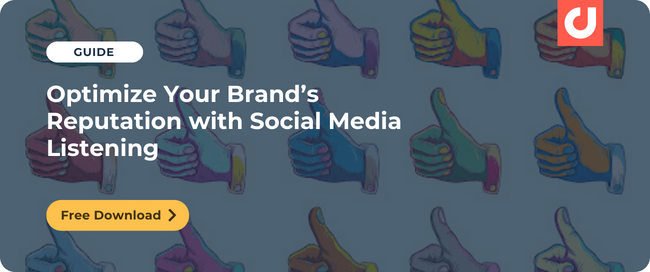
III. Map your ecosystem of influence
Depending on their weight (namely the 3 pillars of influence: audience x authority x resonance), these issuers will have a greater or lesser impact on the reputation and e-reputation of your brand when they express themselves. Your social listening tool or e-reputation monitoring tool has influence scores that allow you to prioritize the importance of each issuer.

Influence scores to measure the weight (audience x authority x resonance) of subject issuers and communities dedicated to sports
Analyze message senders in your target segments by:
- Audience (followers, subscribers, fans): this isn’t everything, but it is an essential indicator for understanding the notoriety and impact of messages. Be careful to analyze the quality and veracity of the audience.
- Authority-Relevance (type of subjects, number of messages targeting the subject): Is the sender legitimate on their subject? Do they occasionally post messages on your sector, your brand or are they a specialist?
- Resonance - Commitment (interactions with communities): do the sender's messages propagate within his community on the same social media channel, other communities on other social media channels, or other media? (TV, radio, written press, etc.)?
Analyze the network of influence: relations with brands, media, other influencers, and Internet users.
Categorize issuers:
- Their influence score according to the 3 pillars of influence: audience, relevance, and engagement.
- Their centers of interest within the segment (ex: fashion segment, the center of interest: shoes) and their socio-demographic profile.

